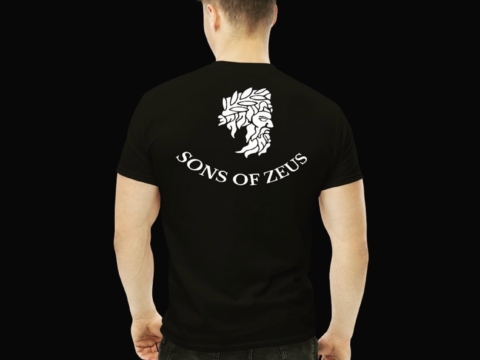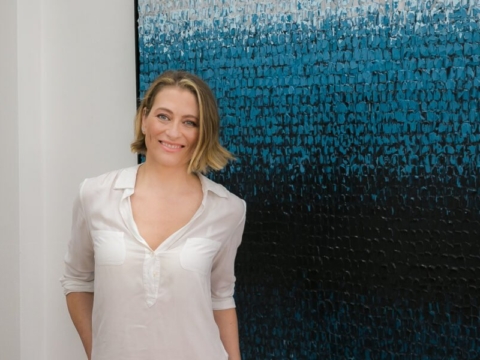JULY TO OCTOBER 1968: SKORPIOS
They were now husband and wife. Mr. and Mrs. Aristotle Socrates Onassis. The world’s most famous couple embraces and then made their way out of the tiny chapel, where cheers immediately erupted. They were pelted with bougainvillea petals and tulips that had been flown in from Holland, along with rice and sugared almonds, a Greek custom meant to ensure happiness. The rain picked up. From atop the knoll, one could see Christina in the harbor below, its lights twinkling and crew running about in preparation for a blowout wedding reception.
The small contingent of photographers and reporters took pictures and raised their voices to be heard. One got Ari’s attention.
“How are you feeling?”
“I feel very well my boy,” the beaming groom said.
The reporter turned to John. “And how about you? How are you feeling?”
John, whose head had been down, looked up and quickly turned away.
And Jackie? The bride gave a three-word answer:
“We are happy…”
Excerpt: “Jackie: Her Transformation from First Lady to Jackie O.” Paul Brandus. USA: Post Hill Press, 2020. p209
Jackie: Her Transformation from First Lady to Jackie O is a beautifully written account tracing the lesser known journey of globally famous, and yet utterly enigmatic Jackie; from grief stricken First Lady to ‘Jackie O’ – wife of Greek shipping magnate Aristotle Onassis, one of the world’s wealthiest men.

Following the assassination of her husband John F. Kennedy, Jaqueline Bouvier Kennedy was left widowed at the age of 34.
Alone and shattered, she had to make a new life for herself and her children.
Jackie’s marriage to the man commonly called Ari or Aristo Onassis, and who amassed the world’s largest privately owned shipping fleet, provided her with the privacy and security she so desperately sought for herself and her children.
“When we think of Jacqueline Kennedy Onassis, we often do so through the lens of her two marriages, one to John F. Kennedy, the other to Greek shipping magnate Aristotle Onassis,” explains Jessica Vandergriff, Post Hill Press.
“The five years between her marriages is oftentimes overlooked, yet it was an incredible period of growth and change for Jackie.”
In Jackie: Her Transformation from First Lady to Jackie O, author and White House correspondent Paul Brandus shines a light on the colourful, adventurous, and yet incredibly painful years in between her marriages. A period in her life when she was struggling to adjust to life on her own, while also transforming into a new, strong and independent woman.
Jackie reveals the real woman behind her famous, trademark sunglasses and discloses never before shared information, such as: the one man she regretted not marrying, the secret second burial of JFK, her own near death in 1967, and her evolution from “political wife Jackie” into “nightclubbing, party girl Jackie.”
Jackie’s wedding to the wealthy Greek shipping tycoon took place in 1968 on Skorpios, Onassis’ private Greek island in the Ionian Sea and from that moment on she was forever known as “Jackie O”.
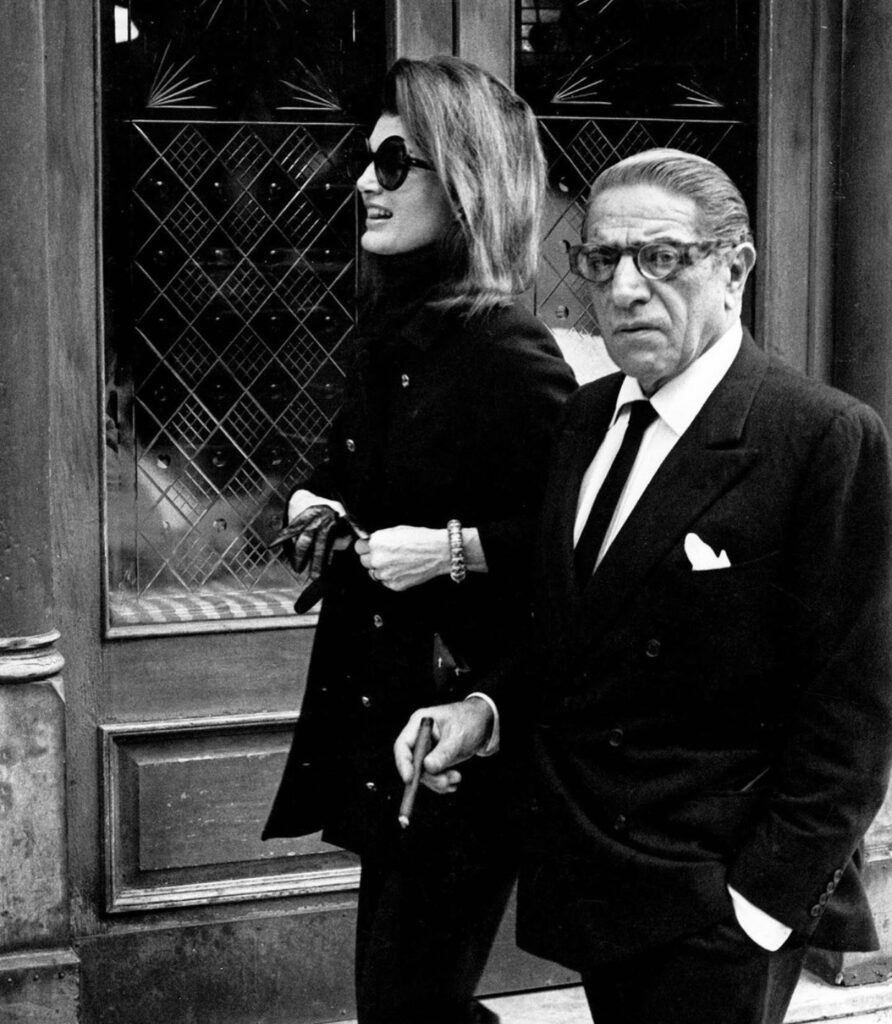
When the former first lady married Aristotle Onassis, five years after the assassination of President John F. Kennedy, the world was shocked.
“The reaction here is anger, shock and dismay,” announced the New York Times.
“The gods are weeping,” read a quote in The Washington Post.
A German newspaper declared: “America has lost a saint.”
Yes, the world was indeed stunned when Jackie married Aristotle Onassis. But had the truth of their relationship – which dated back to the 1950s – been known it would not have been so surprising.
The truth was that Jackie had actually known Onassis for almost as long as she had known John F. Kennedy—and saw qualities in him apart from his immense wealth that she found highly attractive.
Brandus explains, “JFK and Aristotle Onassis seem, on the surface, to be very different men. Actually, they weren’t. And Jackie saw this.”
The series of events leading Jackie to the altar to marry Onassis in fact began long before the assassination of the president of the United States.
While the Kennedys were in the White House, Onassis was already one of the richest and most successful businessmen in the world.
He owned an airline, a shipping empire, and was a prominent player in the oil, gold and real estate industries. He was also known for his philandering, including an affair with a famous American-Greek opera singer Maria Callas.
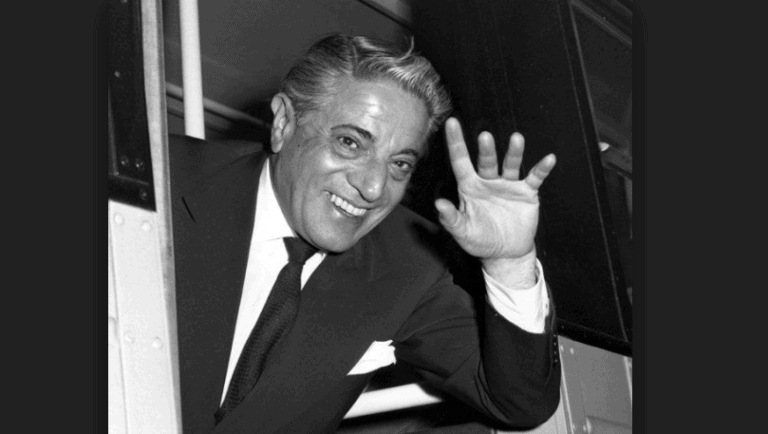
It was Jackie’s younger sister, Lee Radziwill who first invited Jackie, one of the youngest first ladies in U.S. history, to take a trip with her on Onassis’s yacht in 1963.
Jackie was in the midst of deep depression, caused by the death of her third child, Patrick, who was born prematurely.
The president reportedly didn’t like the idea of the trip, fearing it would appear improper. But contrary to popular opinion held by Congress, he relented in the hope that some time in the Aegean Sea would bring Jackie back to herself.
Jackie’s recovery was fleeting, as tragedy lay just ahead.
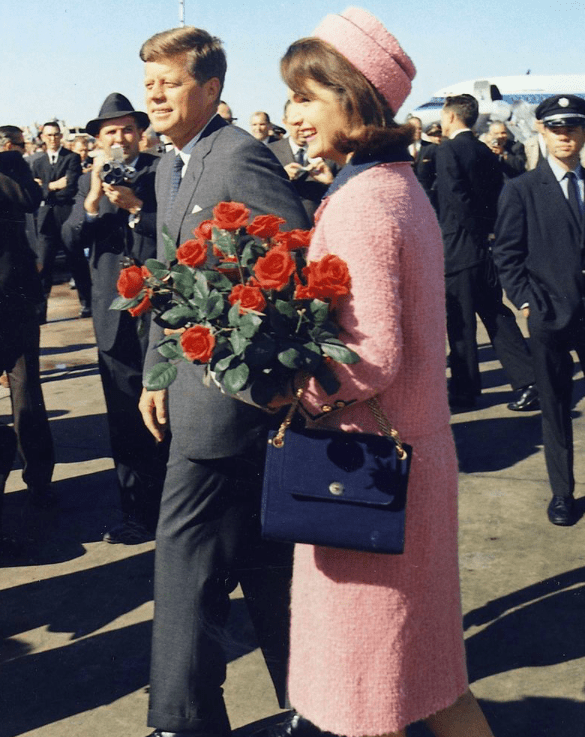
The day of her husband’s assassination, on November 22, 1963, Jackie wore a now iconic pink Chanel suit and matching pill box hat that has since become a symbol of John F. Kennedy’s death.
Covered in her husband’s blood, at just 34 years of age, Jackie refused to take the suit off, saying “I want them to see what they have done to Jack” – a gesture that became national lore and a testament to her indomitable strength.
“The powerful, steely and dignified way in which she carried herself in those first painful, shattering days after JFK’s assassination established a standard that Americans wanted her to maintain. But she wanted—needed—to get on with her life. Her pain was so deep, intense (she thought about suicide in the Spring of 1964), that she had to move on. She simply could not live as the grieving widow for the rest of her life. She was only 34!
“This helps explain why, when she remarried in October 1968, that so many Americans were shocked. How could she not live as THEY wanted her to live?” says Brandus, offering his thoughts as to why the years between Jackie’s marriages are so often overlooked or forgotten about.
One of the most private of public figures, Jackie carefully managed her contact with the media, usually shying away from making public statements, and strictly controlling the extent to which her children were photographed.
Recently featured on the cover of Closer Weekly, Brandus’s account of these lesser known five years between her marriages to two of the twentieth century’s most powerful men has received praise from critics, with some addressing the question in everyone’s mind:
How there can be anything more to learn about one of the world’s most scrutinised women?
“How can there still be things to learn about Jackie Kennedy, one of the world’s most scrutinized women? Paul Brandus manages to do that by exploring the five years between the death of John F. Kennedy and her marriage to Aristotle Onassis, an event that shocked many who revered her. This dishy, insider account explains what was happening behind the scenes.” Susan Page, Washington Bureau Chief of USA Today and author of The Matriarch: Barbara Bush and the Making of an American Dynasty.
In his acknowledgements, Brandus makes special mention of Clint Hill, the Secret Service agent who was with Jackie every step of the way in Dallas, who went out of his way many years ago to take to take the author on a tour of Dealey Plaza, the site of President Kennedy’s assassination, an extremely gesture for him. Hill continued to be generous with his time and memories over the ensuing years, allowing Brandus access to a valuable insider’s insight.
Brandus talks about what inspired him to write the book Jackie.
“Whenever I’m in the White House, it’s always mind-blowing to think that this is where the presidents and theirfamilies actually lived. And of all the First Ladies, Jacqueline Kennedy’s story is like no other. So famous yet so mysterious. So strong yet so fragile. The tragedies she endured and how she recovered—slowly and painfully—is such an amazing story. Her children, her lovers, her joys and fears. The private side of her that even today is so little understood. I sought to understand it better and bring that story to readers.”
Brandus tell us that Jackie once said that, “When you look back on your life, you hardly recognize the person you once were. Like a snake shedding skins.”
“She shed several,” says Brandus. “Each was different than the one before. The period I focused on—1963 to 1968—between her two marriages, is a great example. The Jackie of 1968 was very different from the Jackie of 1963. I want readers to go along for the ride as she makes this amazing transformation.

A frequent speaker at presidential libraries, Paul Brandus is an award-winning independent member of the White House press corps and the author of two books on the White House and presidency: the acclaimed Under This Roof: The WhiteHouse and the Presidency (Lyons Press, 2015) and This Day in Presidential History (Bernan Press, 2017).
He founded West Wing Reports in 2009 (Twitter @WestWingReport) which, with over 375,000 followers is one of the biggest Twitter accounts among all accredited members of the White House press corps.
In 2011, Brandus won the Shorty Award for “Best Journalist on Twitter,” sponsored by the Knight Foundation.
SUGGESTED LINKS TO THE BOOK INCLUDE:
Amazon: https://www.amazon.com/Jackie-Her-Transformation-First-Lady/dp/1642933457
Booktopia: https://www.booktopia.com.au/jackie-paul-brandus/book/9781642933451.html
Book Depository: https://www.bookdepository.com/Jackie-Paul-Brandus/9781642933451
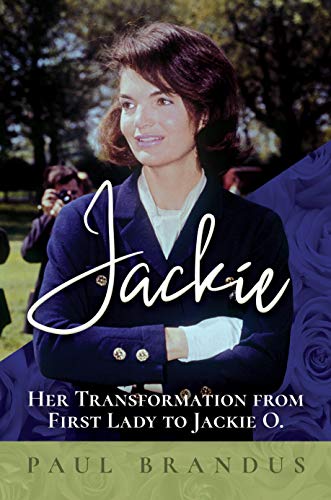
READ MORE ON GREEK CITY TIMES:
On this day in 1906 a Greek tycoon is born
March 15th 1975: Aristotle Onassis passes away
November 19 1988 Christina Onassic sadly passes away aged 37


